“Prevention is better than cure.” This timeless saying applies not only to people but also to our four-legged companions.
While every dog can face health challenges, certain breeds are burdened with conditions that make illness almost inevitable. These problems are not random but the result of breeding choices that favored looks and popularity over long-term vitality.
As dog lovers, we must confront this reality with honesty. Choosing a breed wisely is an act of care, one that spares both owner and animal from avoidable pain. Dogs depend on us to protect their health from the moment we bring them home, and that begins with informed decisions.
In this guide, we’ll uncover the dog breeds most at risk for serious health issues and explain why avoiding them may be the kindest choice you can make for your future companion.
Dog Breeds To Avoid For Health Reasons
1. Dachshund

The Dachshund’s elongated spine, combined with short legs, makes them prone to intervertebral disc disease (IVDD), as highlighted in Purina. This condition can trigger pain, limit mobility, and, in severe cases, cause paralysis. Regular monitoring and early intervention are essential in managing spinal stress.
Weight-Related Strain
Carrying extra weight increases the risk of worsening back issues and limits activity levels. Preventing obesity is one of the most effective ways to reduce health problems. A balanced diet and portion control are important to keep their frame from unnecessary strain.

Additional Concerns
Apart from spinal risks, Dachshunds may face knee and eye complications throughout their lifetime. Common issues include patellar luxation, glaucoma, and cataracts. Owners who schedule routine checkups and eye screenings are more likely to manage these conditions successfully.
Care and Prevention
To protect their backs, Dachshunds should avoid constant jumping or climbing stairs. Building safe exercise habits and maintaining a lean body weight are key preventive measures. Their needs differ from many healthy dog breeds, making lifestyle adjustments vital for long-term comfort.
2. Cocker Spaniel

Cocker Spaniels are well known for their long, drooping ears that limit airflow, creating a warm environment where bacteria and yeast thrive. Without regular cleaning, ear infections can become persistent, sometimes leaving lasting discomfort for the dog.
Joint and Mobility Concerns
Hip dysplasia has been identified within the breed and can progress into joint pain and mobility problems as the dog ages. In active households, this may limit the amount of exercise a Cocker Spaniel can handle comfortably. Preventive screening and controlled activity are often recommended to manage this risk.
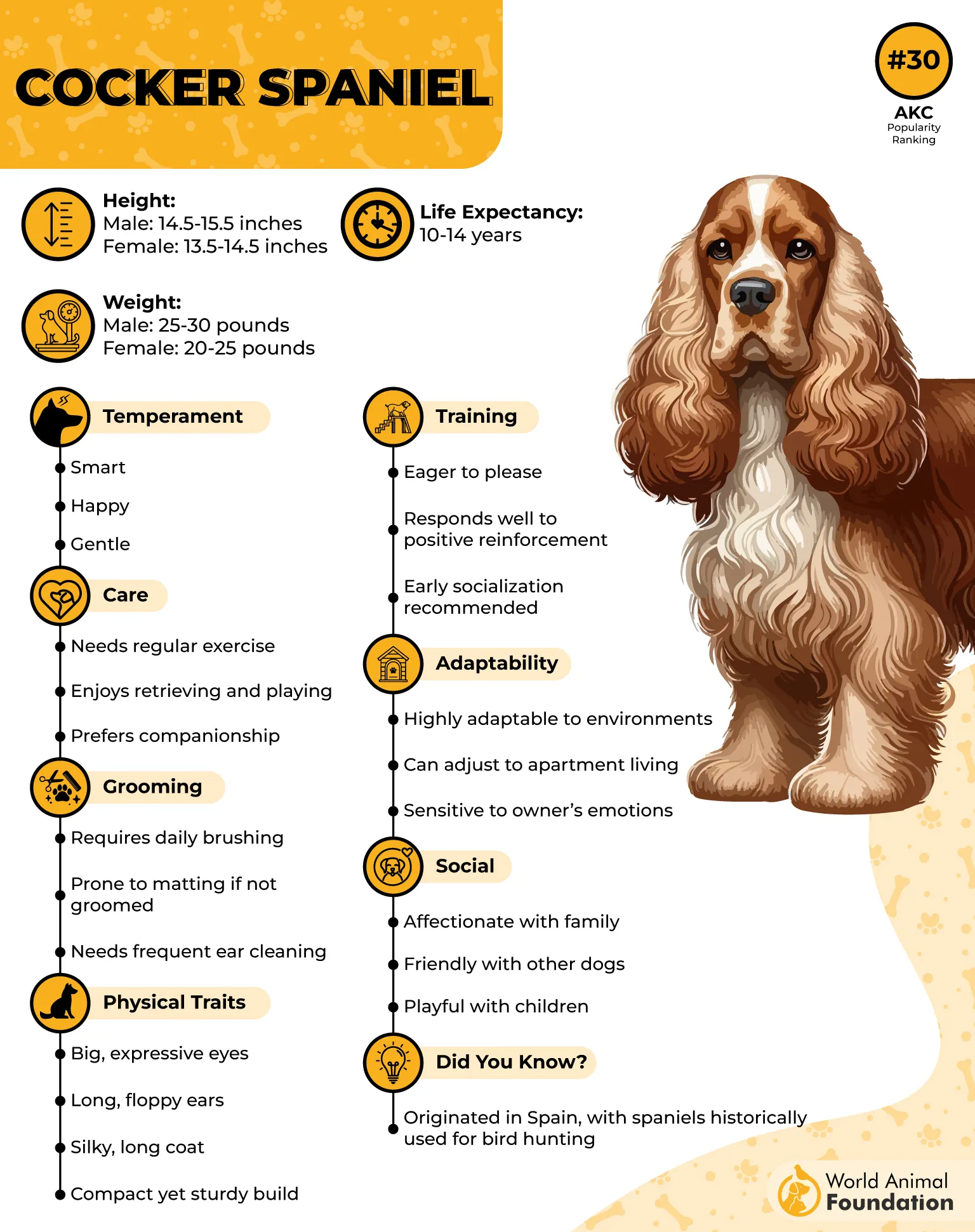
Skin and Allergy Sensitivities
Their skin can react to environmental allergens, leading to redness, irritation, and persistent itching that needs veterinary attention. Owners often find themselves experimenting with diet adjustments or topical treatments to keep symptoms manageable.
Itching and hotspots
Food-related allergies
Recurring skin irritation
Eye Health Risks
Progressive retinal atrophy and cataracts are recorded issues for the breed, sometimes developing quietly before noticeable vision loss occurs. Regular ophthalmic checks are often encouraged by veterinarians to catch these early.
3. Yorkshire Terrier

Yorkshire Terriers are known for their lively energy, but their small frame makes them vulnerable to airway issues. Tracheal collapse is a common problem, causing coughing fits and breathing difficulty, especially during play or exercise. This condition often needs careful management to avoid long-term discomfort.
Joint and Mobility Issues
Luxating patellas frequently affect this breed, where the kneecap slides out of place and disrupts normal movement. The impact ranges from minor limping to severe pain that requires surgical correction. Owners often notice skipping steps or sudden lameness as early signs of the issue.

Internal Health Concerns
As much as we adore Yorkshire Terriers, it is important to acknowledge the range of health concerns they face. Liver shunts can prevent proper detoxification of the blood, while diabetes and eye diseases may also appear over time.
Care and Prevention
Regular monitoring helps reduce complications and maintain their quality of life. Preventive steps often include controlled exercise, dental hygiene, and weight management. With consistent check-ups and treatment plans, many Yorkshire Terriers can still enjoy a long and healthy life.
4. Siberian Husky

Siberian Huskies are built for endurance and thrive when given space to run daily. Without consistent outlets, their physical strain can worsen existing health challenges. Families often underestimate the stamina required to keep them content.
Breed-Specific Conditions
While generally resilient, Huskies are prone to breed-specific health issues that require long-term monitoring. These include:
Cataracts, which may impair vision over time
Hip dysplasia leading to joint discomfort
Epilepsy can cause recurring seizures
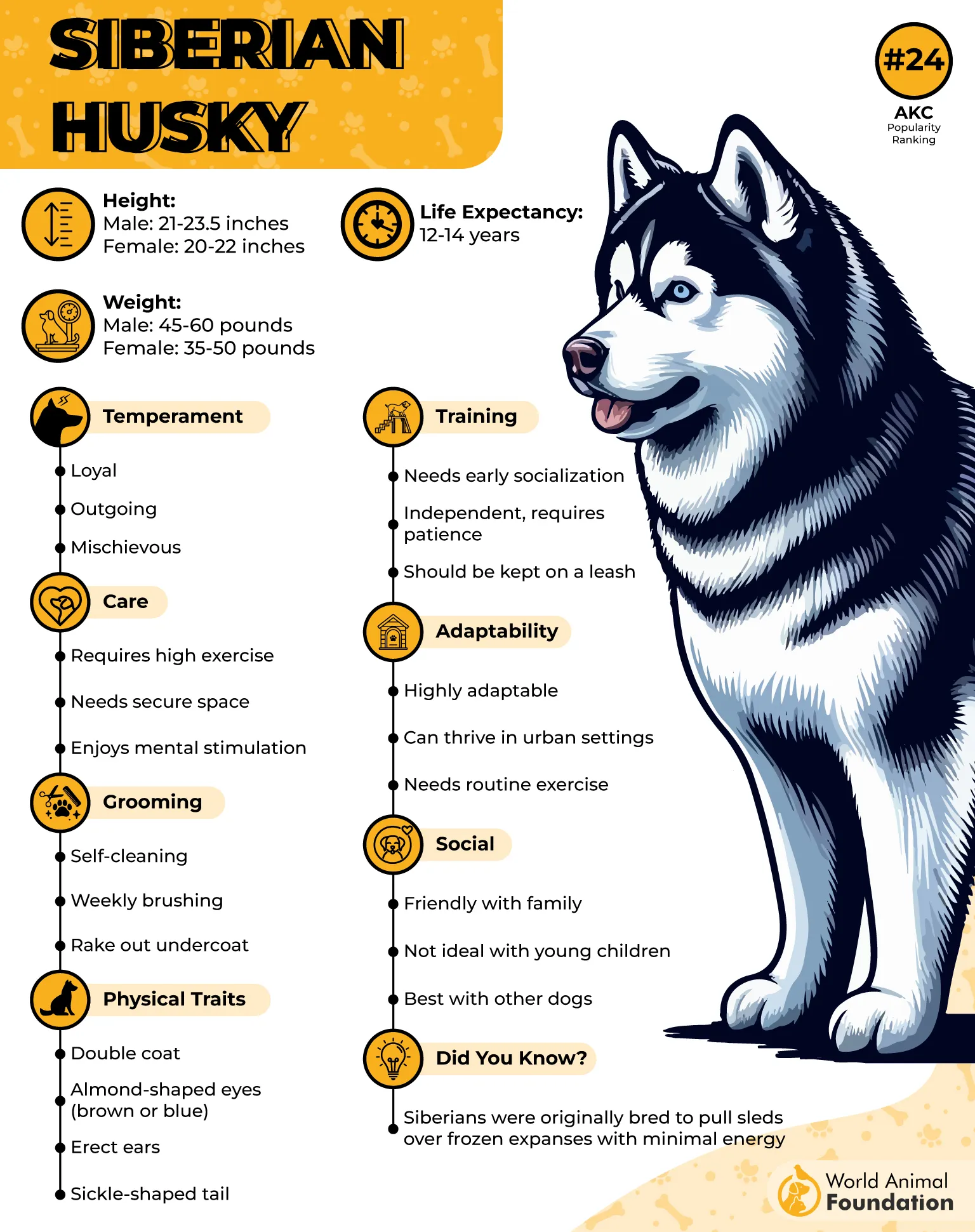
Skin and Coat Concerns
A unique risk for this breed is zinc-responsive dermatosis, a condition linked to poor zinc absorption. It causes hair loss, crusted patches, and recurring skin infections if not managed properly. Regular checkups are vital to detect early signs.
Balanced Care Requirements
Maintaining a healthy weight is essential for reducing pressure on joints and preventing mobility decline, as mentioned in PetCareRx. In addition, mental stimulation through problem-solving games helps reduce anxiety-driven behaviors, supporting both physical and emotional well-being.
5. Bulldog

Bulldogs are easily recognized by their compact build and signature pushed-in face, but these same traits contribute to many chronic issues. Their shortened skull makes them prone to breathing problems, which can worsen in warm climates or after exercise, as per the experts at NPR. Even mild exertion may require close monitoring.
Range of Health Concerns
This breed is often labeled as one of the most unhealthy because of multiple overlapping vulnerabilities. Common health conditions include:
Hip and elbow dysplasia from carrying excess weight on short limbs
Skin infections between their deep facial folds
Eye issues such as Cherry Eye, where the third eyelid gland protrudes
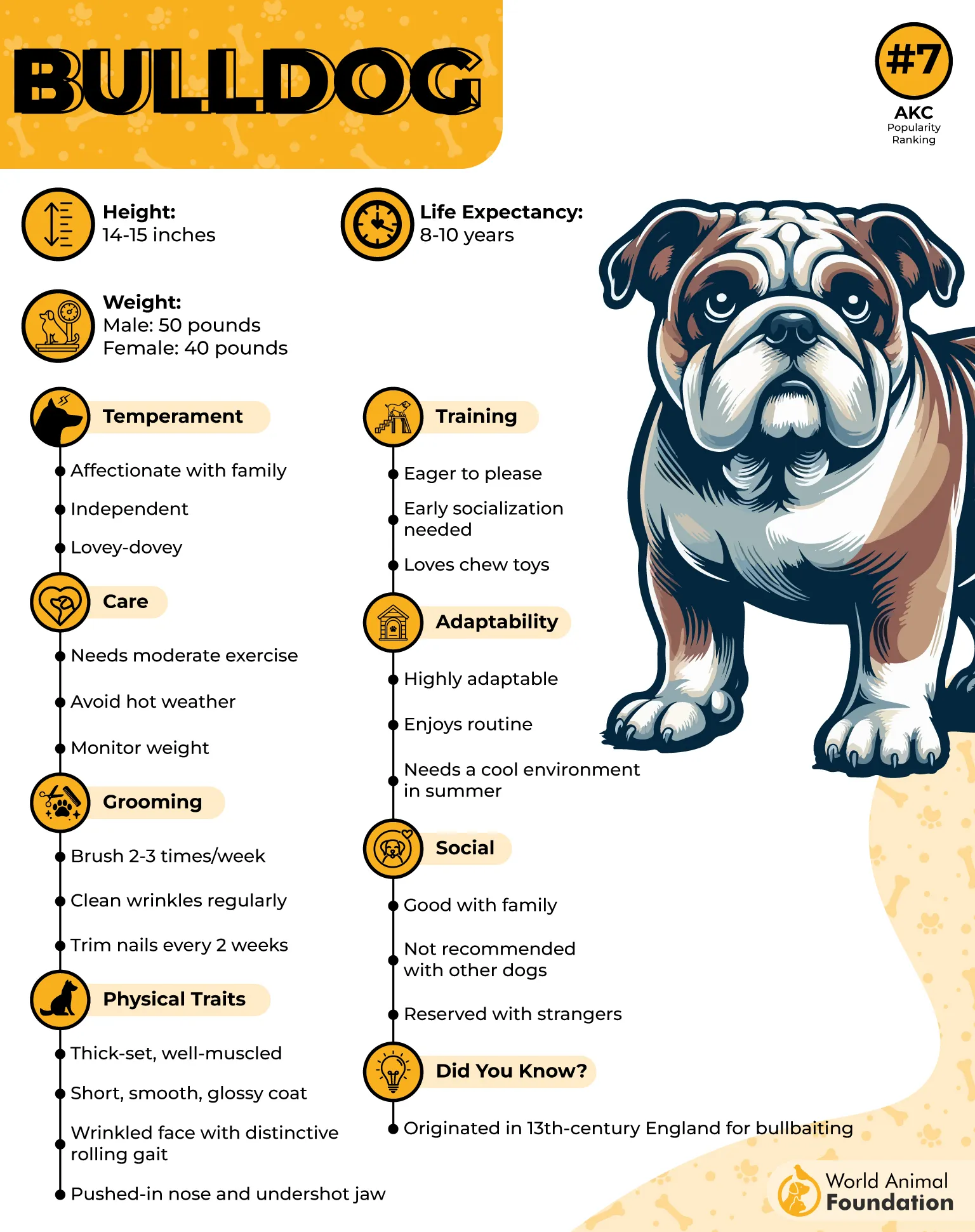
Respiratory and Mobility Risks
Bulldogs share traits with other brachycephalic breeds, meaning their narrowed airways can restrict oxygen flow. Many require veterinary care to manage airway blockages. Their stocky structure also limits stamina, putting pressure on joints and creating early arthritis risks.
Family Considerations
While they are affectionate companions, families need to be aware that flat-faced breeds require regular vet checkups to maintain comfort and mobility. Daily routines must account for restricted tolerance to heat and exercise. These adjustments can significantly impact both care and cost.
6. Boxer

Boxers are playful, athletic, and affectionate, but their energetic nature often masks serious health challenges. Many dogs in this breed experience conditions that shorten their active years and require ongoing veterinary care to manage.
Serious Medical Risks
They face higher rates of cancer compared to other breeds, particularly mast cell tumors and lymphoma. Heart disease is also a concern, with cardiomyopathy sometimes leading to irregular rhythms or sudden cardiac failure.
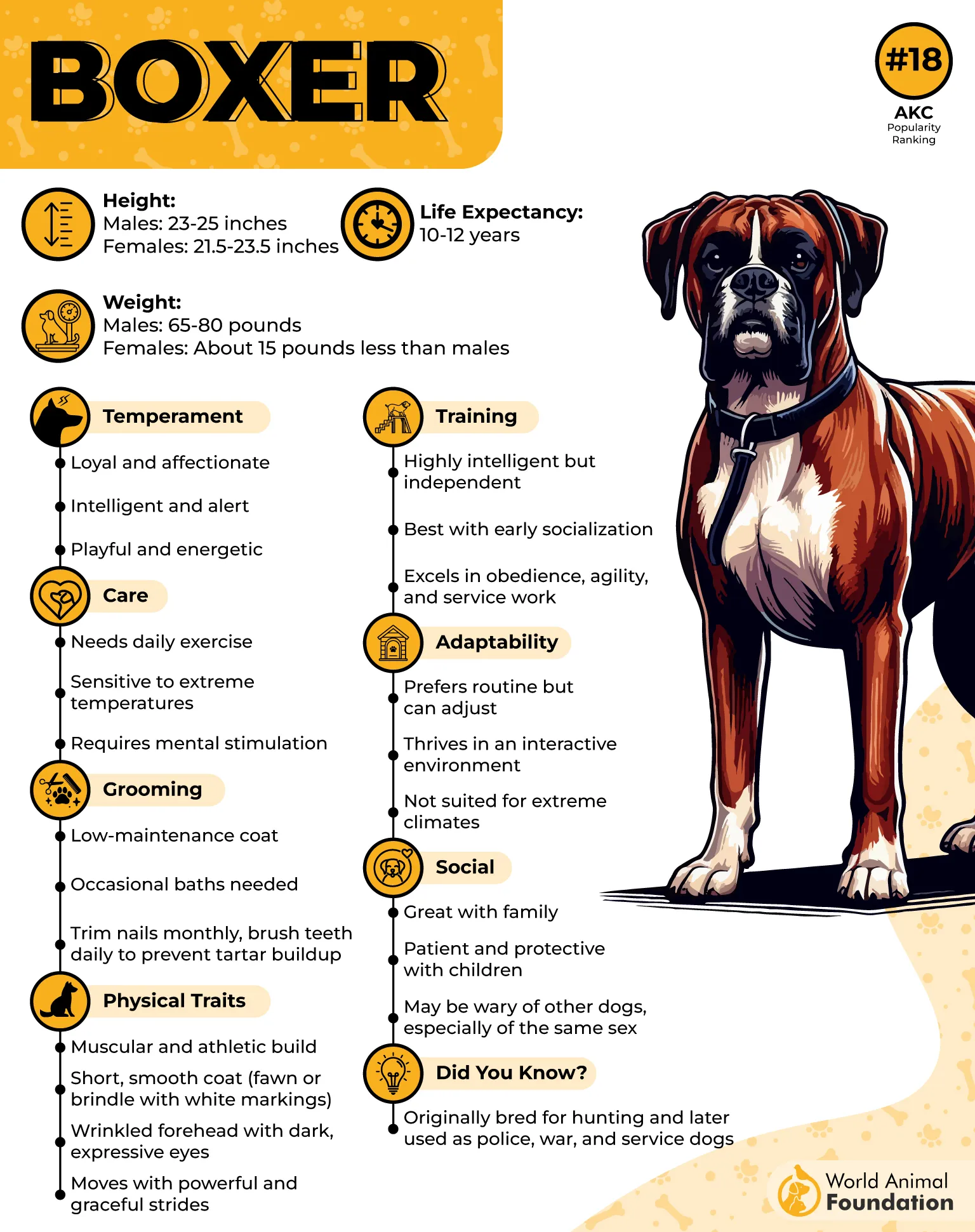
Orthopedic and Digestive Problems
Hip dysplasia is another issue that can affect mobility and quality of life as they age. They are also vulnerable to bloat, a dangerous gastric condition that can twist the stomach and requires immediate surgical attention to save the dog.
Breathing and Structural Issues
Being a short-nosed breed, Boxers are at risk of brachycephalic airway syndrome. This condition contributes to breathing issues that worsen in hot or humid environments, making exercise management essential for their long-term health.
7. Pug

Pugs are brachycephalic, meaning their shortened skull shape makes breathing difficult in certain conditions. They often struggle in heat or during vigorous activity, where restricted airways can cause wheezing and labored breathing. This predisposition ties them closely to brachycephalic airway syndrome.
Eye-Related Concerns
Their large, round eyes are part of their charm but also a frequent source of health issues. Conditions such as corneal ulcers and eye displacement can appear after minor injuries. Even routine play or bumping into objects increases the risk of long-term ocular damage.
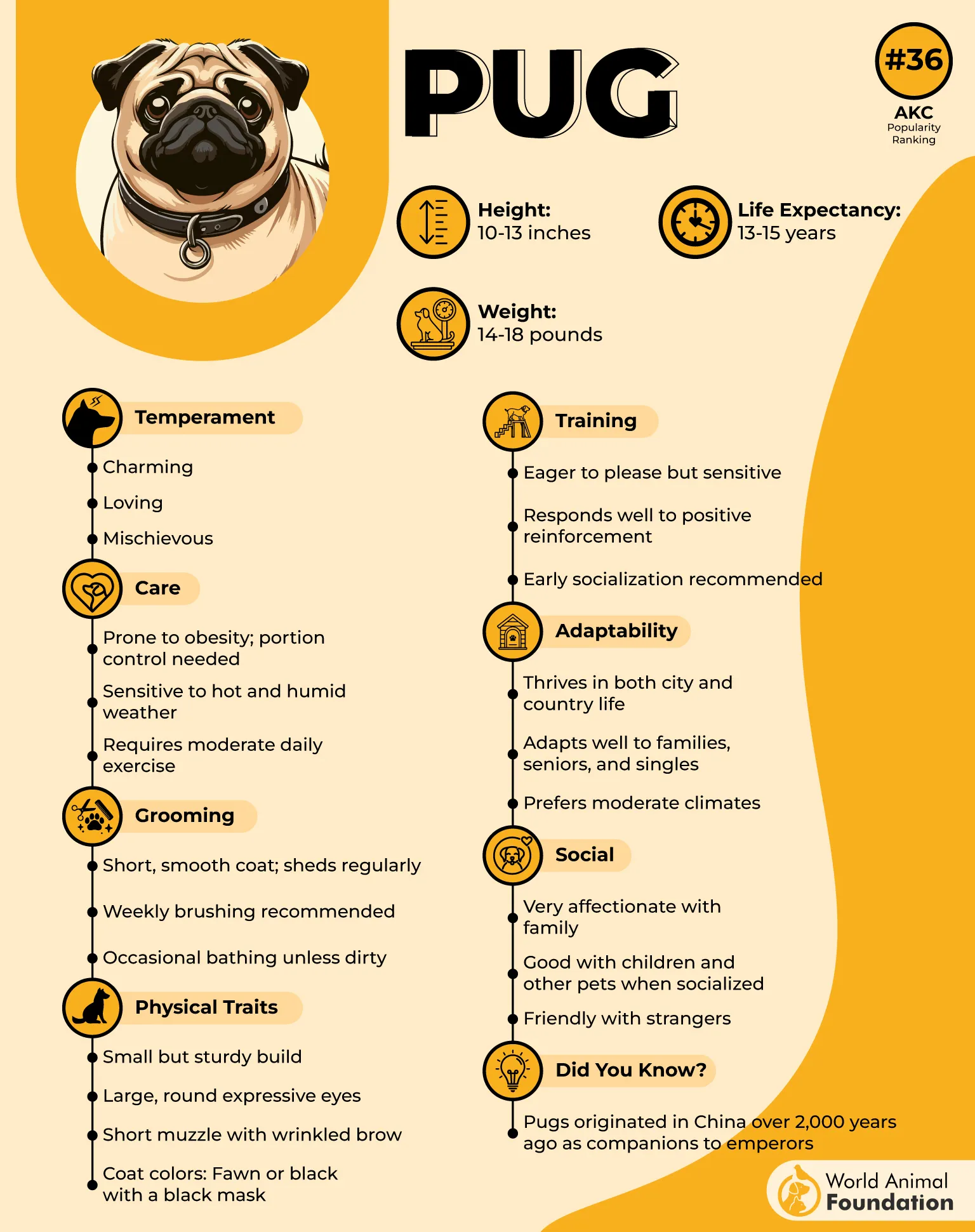
Orthopedic and Mobility Risks
Some Pugs face orthopedic problems that affect daily comfort and mobility. Common issues include:
Hip dysplasia, which causes pain in the hind legs
Patellar luxation, leading to difficulty with stable walking
Early onset arthritis from joint strain
General Health Patterns
Though many live happily into their teens, this breed is predisposed to multiple overlapping health concerns. Weight gain worsens respiratory and joint conditions, while their compact structure limits stamina. Regular veterinary care is essential to manage these interconnected challenges.
8. German Shepherd

German Shepherds are admired for their intelligence and working ability, yet their genetic makeup comes with vulnerabilities. Joint disorders such as hip and elbow dysplasia are widespread, often limiting their mobility and reducing their quality of life as they get older.
Neurological Concerns
Another major health issue within the breed is degenerative myelopathy, a progressive spinal condition. This disease gradually weakens the hind legs and can eventually lead to paralysis, making it one of the most devastating illnesses seen in this dog.
Digestive and Allergy Risks
Owners also need to watch for bloat, a sudden and dangerous swelling of the stomach that requires immediate veterinary attention. Beyond this, German Shepherds can face recurring allergies that trigger chronic itching, skin inflammation, and digestive sensitivities.

Key Considerations for Families
Before choosing this breed, families should understand that while some German Shepherds remain generally healthy, medical complications are frequent. Key areas of concern include:
Hip and elbow dysplasia
Degenerative myelopathy
Bloat (gastric dilatation-volvulus)
Food or environmental allergies
9. Beagle

Beagles are well-loved for their cheerful energy, affectionate personalities, and sharp scenting ability. Families often praise their adaptability, but this popular breed also carries inherited risks that owners should carefully consider. Long-term wellness often depends on attentive veterinary care.
Common Health Concerns
While generally active, Beagles can face a series of genetic health problems that may limit their quality of life. As per PDSA, these include:
Epilepsy that can trigger seizures
Certain forms of cancer
Intervertebral disc disease affecting the spine
Eye conditions such as cherry eye
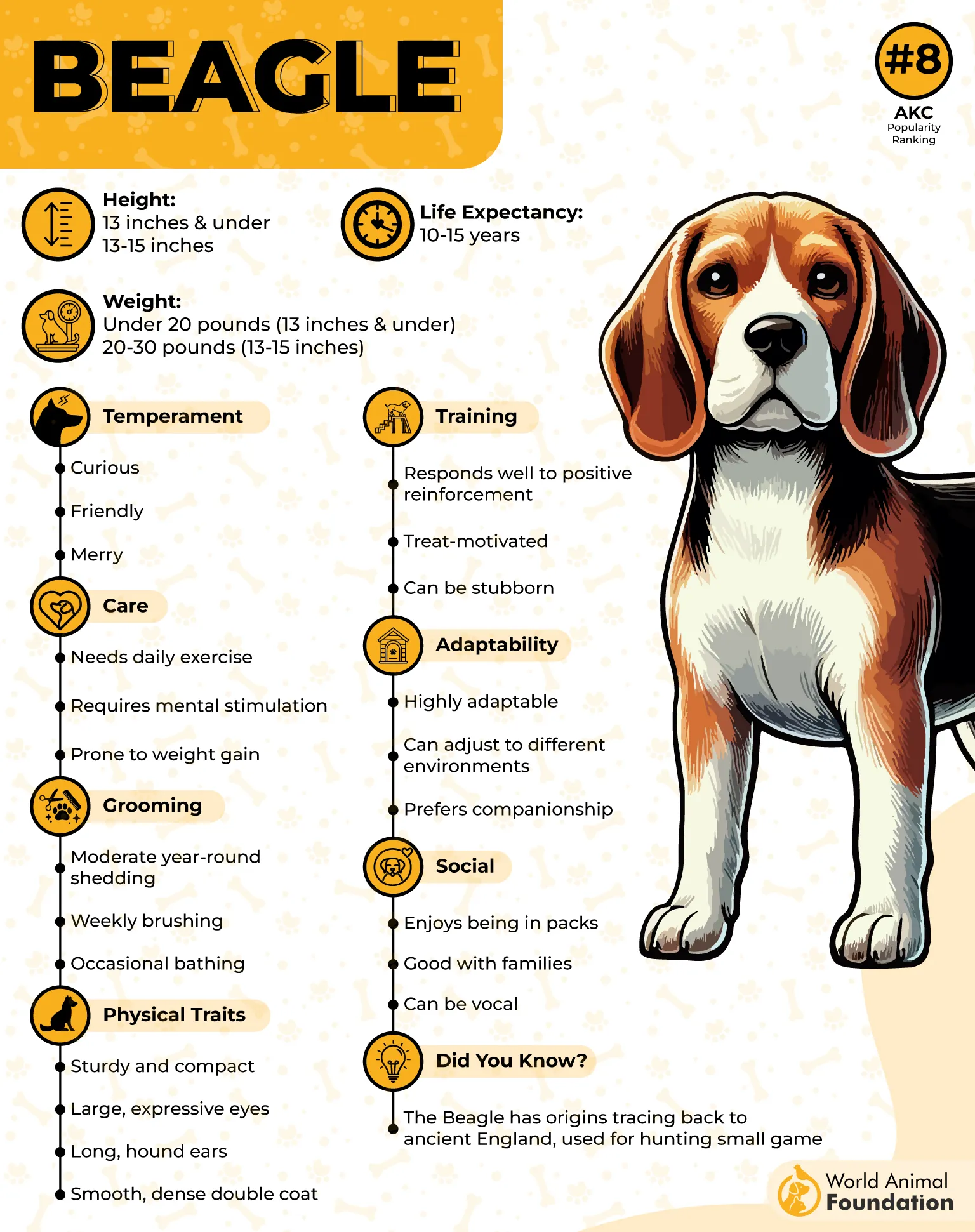
Lifelong Monitoring
Regular health screening is strongly recommended for Beagles since early detection can make a critical difference. Many responsible breeders now perform genetic tests, helping reduce the chances of passing along serious disorders. Still, families should remain alert to subtle physical changes.
Hidden Challenges for Owners
Though Beagles thrive as family pets, their predisposition to chronic illnesses can result in frequent vet visits and unexpected expenses. Owners committed to their well-being must be ready to balance the breed’s playful nature with the ongoing responsibility of medical management.
Conclusion
Choosing a dog responsibly means looking beyond appearance and popularity to focus on long-term health. Certain breeds are vulnerable to a life-threatening condition or chronic disorders shaped by past breeding practices.
While some face only a few issues, others present a major concern that affects mobility, comfort, and lifespan. Families who commit to careful monitoring and regular veterinary check-ups are better prepared to recognize early signs of trouble before they escalate.
By making informed choices, owners not only protect their pets from unnecessary suffering but also strengthen the bond of trust and care within the home.


